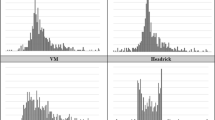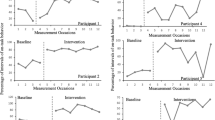Kyle Reese: And it was over. Skynet was gone. And now one road has become many. Though questions remain, we’ll search for the answers together. But one thing we know for sure. The future is not set
- Terminator Genisys.
Abstract
Predicting long-term outcomes of interventions is necessary for educational and social policy-making processes that might widely influence our society for the long term. However, performing such predictions based on data from large-scale experiments might be challenging due to the lack of time and resources. In order to address this issue, computer simulations based on evolutionary causal matrices and Markov chain can be used to predict long-term outcomes with relatively small-scale laboratory data. In this paper, we introduce Python classes implementing a computer simulation model and presented some pilot implementations demonstrating how the model can be utilized for predicting outcomes of diverse interventions. We also introduce the class-structured simulation module both with real experimental data and with hypothetical data formulated based on social psychological theories. Classes developed and tested in the present study provide researchers and practitioners with a feasible and practical method to simulate intervention outcomes prospectively.






Similar content being viewed by others
References
Bandura A, Schunk DH (1981) Cultivating competence, self-efficacy, and intrinsic interest through proximal self-motivation. J Personal Soc Psychol 41:586–598
Bertsekas DP, Tsitsikilis JN (2002) Introduction to probability. Athena Scientific, Nashua
Brown AL (1992) Design experiments: theoretical and methodological challenges in creating complex interventions in classroom settings. J Learn Sci 2:141–178. https://doi.org/10.1207/s15327809jls0202_2
Carew TJ, Magsamen SH (2010) Neuroscience and education: an ideal partnership for producing evidence-based solutions to guide 21(st) century learning. Neuron 67:685–8. https://doi.org/10.1016/j.neuron.2010.08.028
Cialdini RB (1980) Full-cycle social psychology. Appl Soc Psychol Annu 1:21–47
Claidière N (2009) Darwinian theories of cultural evolution: models and mechanisms. Ecole Normale Supeieure & Universite Pierre et Marie Curie, Paris
Claidière N, Scott-Phillips TC, Sperber D (2014) How Darwinian is cultural evolution? Philos Trans R Soc Lond Ser B Biol Sci 369:20130368. https://doi.org/10.1098/rstb.2013.0368
Freedman JL, Fraser SC (1966) Compliance without pressure: the foot-in-the-door technique. J Personal Soc Psychol 4:195–202. https://doi.org/10.1037/h0023552
Han H (2016a) Attainable and relevant moral exemplars as powerful sources for moral education: from vantage points of virtue ethics and social psychology. In: Invited oral presentation at the 4th annual conference of the jubilee centre for character and virtues, Oxford, UK
Han H (2016b) Neuroscientific and social psychological investigation on psychological effects of stories of moral exemplars. Stanford University, Stanford
Han H, Jeong C, Damon W, Cohen GL (2015) Are attainable exemplars more effective at promoting students’ moral motivation? In: Moral development and moral education SIG paper session presentation at the American educational research association 2015 annual meeting, Chicago, IL
Han H, Kim J, Jeong C, Cohen GL (2017a) Attainable and relevant moral exemplars are more effective than extraordinary exemplars in promoting voluntary service engagement. Front Psychol 8:283. https://doi.org/10.3389/fpsyg.2017.00283
Han H, Lee K, Soylu F (2016) Predicting long-term outcomes of educational interventions using the evolutionary causal matrices and Markov chain based on educational neuroscience. Trends Neurosci Educ 5:157–165. https://doi.org/10.1016/j.tine.2016.11.003
Han H, Lee K, Soylu F (2017b) Markov-learning. https://github.com/xxelloss/Markov-Learning
Han H, Thoma SJ, Soylu F, Lee K (2017c) How to make moral education more effective?: from a brain study to policy making. In: AERA annual meeting, San Antonio, TX
Lockwood P, Kunda Z (1997) Superstars and me: predicting the impact of role models on the self. J Personal Soc Psychol 73:91–103. https://doi.org/10.1037/0022-3514.73.1.91
Loken E, Gelman A (2017) Measurement error and the replication crisis. Science 355:584–585. https://doi.org/10.1126/science.aal3618
Maxwell SE, Lau MY, Howard GS (2015) Is psychology suffering from a replication crisis? What does “failure to replicate” really mean? Am Psychol 70:487–498. https://doi.org/10.1037/a0039400
Miton H, Claidière N, Mercier H (2015) Universal cognitive mechanisms explain the cultural success of bloodletting. Evol Hum Behav 36:303–312. https://doi.org/10.1016/j.evolhumbehav.2015.01.003
Monin B (2007) Holier than me? Threatening social comparison in the moral domain. Rev Int Psychol Soc 20:53–68
Monin B, Sawyer PJ, Marquez MJ (2008) The rejection of moral rebels: resenting those who do the right thing. J Personal Soc Psychol 95:76–93. https://doi.org/10.1037/0022-3514.95.1.76
Okonofua JA, Paunesku D, Walton GM (2016) Brief intervention to encourage empathic discipline cuts suspension rates in half among adolescents. Proc Natl Acad Sci 113. https://doi.org/10.1073/pnas.1523698113
Page L, Brin S, Motwani R, Winograd T (1998) The page rank citation ranking: bringing order to the web. In: Proceedings of the 7th international world wide web conference, pp 161–172
Shaywitz SE, Morris R, Shaywitz BA (2008) The education of dyslexic children from childhood to young adulthood. Annu Rev Psychol 59:451–475. https://doi.org/10.1146/annurev.psych.59.103006.093633
Shmueli G (2010) To explain or to predict? Stat Sci 25:289–310. https://doi.org/10.1214/10-STS330
Simmons JP, Nelson LD, Simonsohn U (2011) False-positive psychology. Psychol Sci 22:1359–1366. https://doi.org/10.1177/0956797611417632
Stock J, Cervone D (1990) Proximal goal-setting and self-regulatory processes. Cogn Ther Res 14:483–498. https://doi.org/10.1007/Bf01172969
Vygotsky L (1978) Interaction between learning and development. Read Dev Child 23:34–41
Walton GM, Cohen GL (2011) A brief social-belonging intervention improves academic and health outcomes of minority students. Science 331:1447–1451. https://doi.org/10.1126/science.1198364
Yarkoni T, Westfall J (2017) Choosing prediction over explanation in psychology: lessons from machine learning. Perspect Psychol Sci 53:174569161769339. https://doi.org/10.1177/1745691617693393
Zhitomirsky-Geffet M, Bar-Ilan J, Levene M (2016) A Markov chain model for changes in users’ assessment of search results. PLoS ONE 11:e0155285. https://doi.org/10.1371/journal.pone.0155285
Zimmerman BJ, Bandura A, Martinez-Pons M (1992) Self-motivation for academic attainment: the role of self-efficacy beliefs and personal goal setting. Am Educ Res J 29:663–676. https://doi.org/10.3102/00028312029003663
Author information
Authors and Affiliations
Corresponding author
Electronic supplementary material
Below is the link to the electronic supplementary material.
Rights and permissions
About this article
Cite this article
Han, H., Lee, K. & Soylu, F. Simulating outcomes of interventions using a multipurpose simulation program based on the evolutionary causal matrices and Markov chain. Knowl Inf Syst 57, 685–707 (2018). https://doi.org/10.1007/s10115-017-1151-0
Received:
Revised:
Accepted:
Published:
Issue Date:
DOI: https://doi.org/10.1007/s10115-017-1151-0




